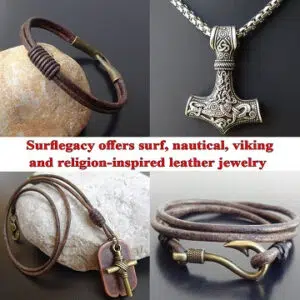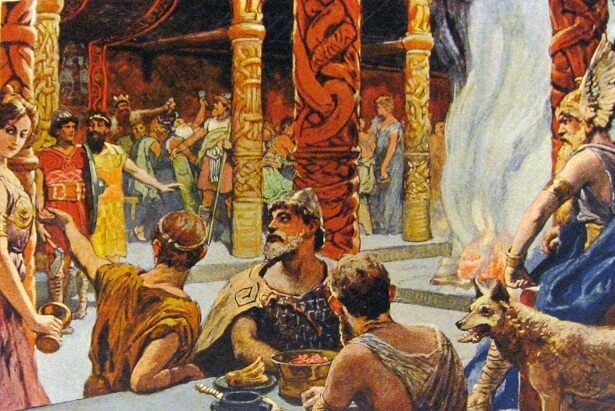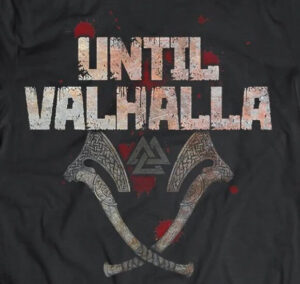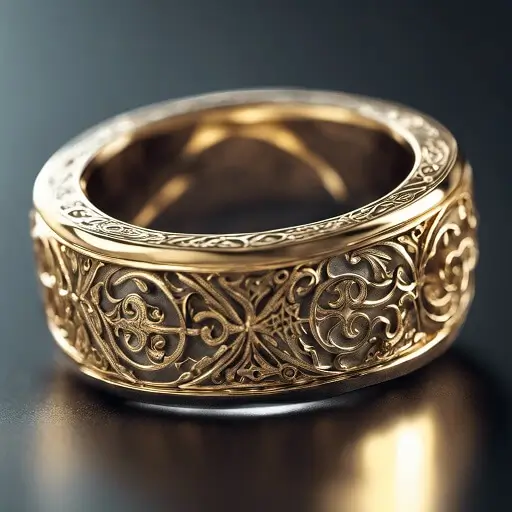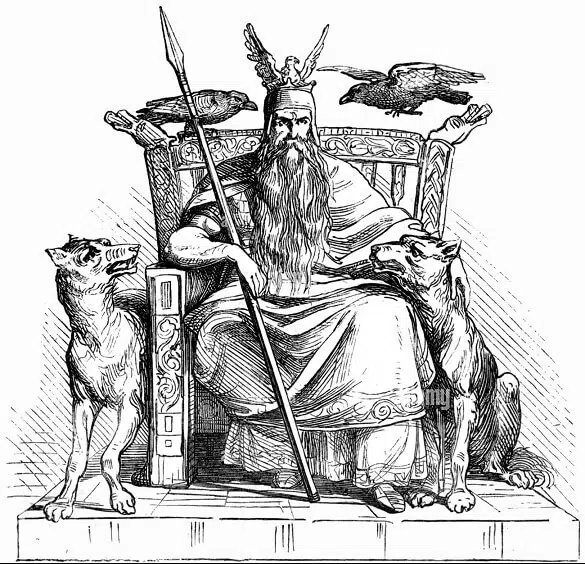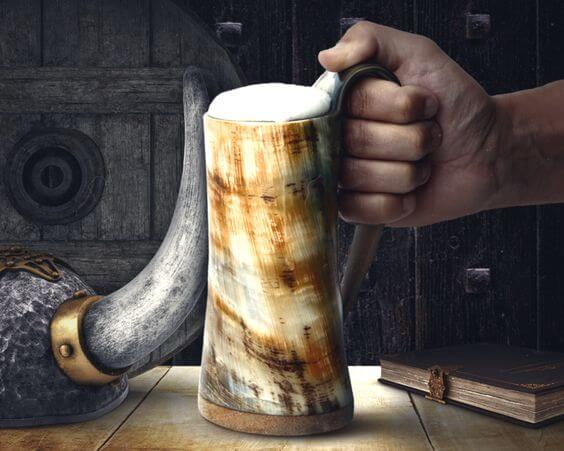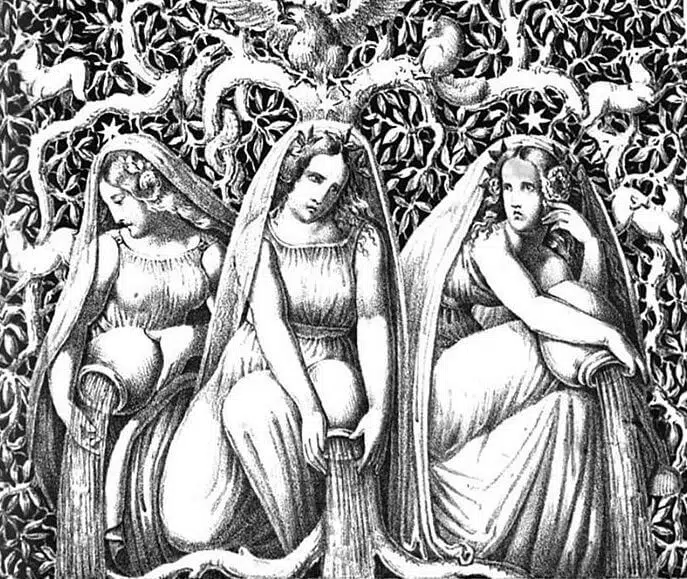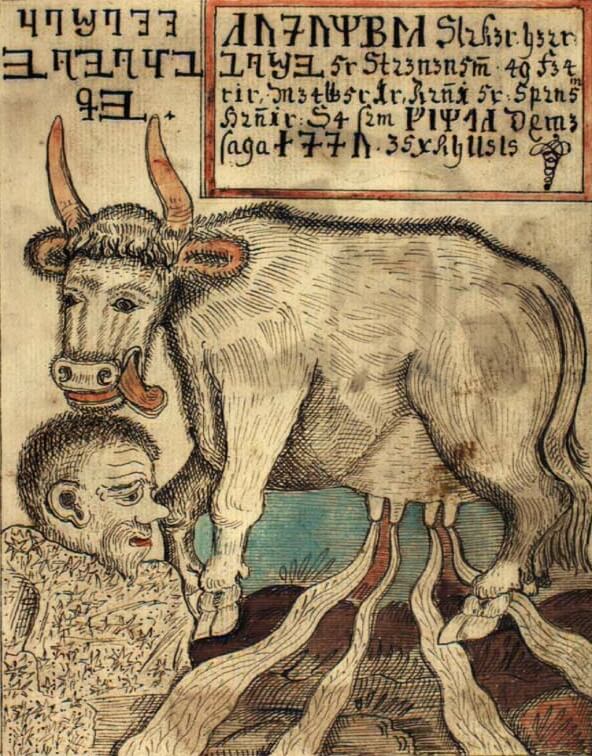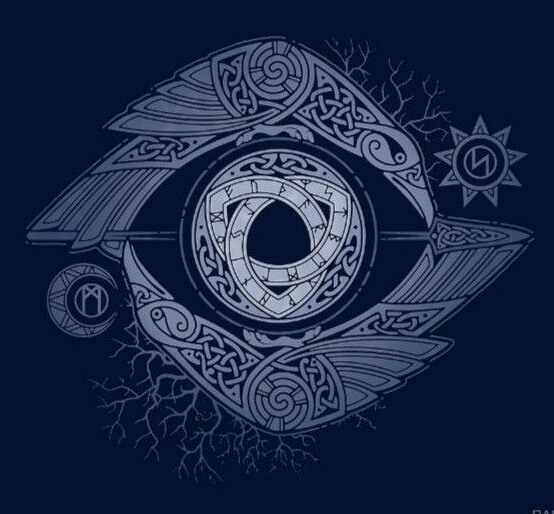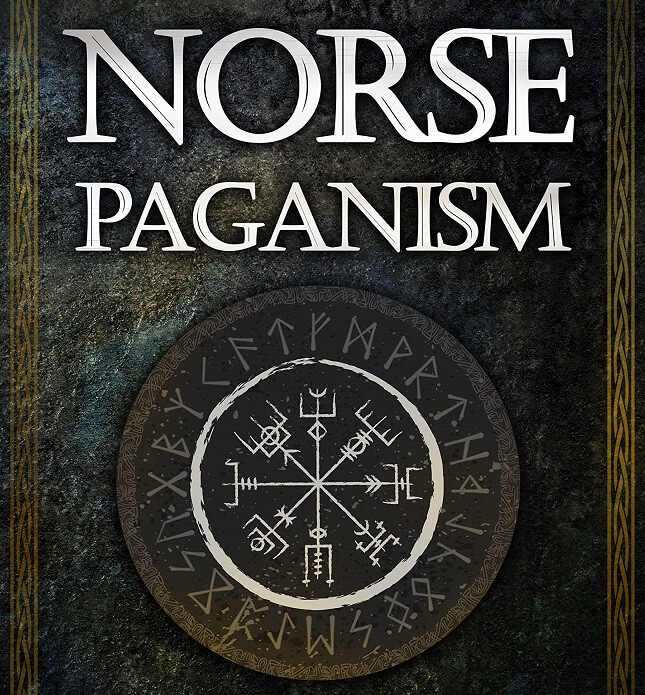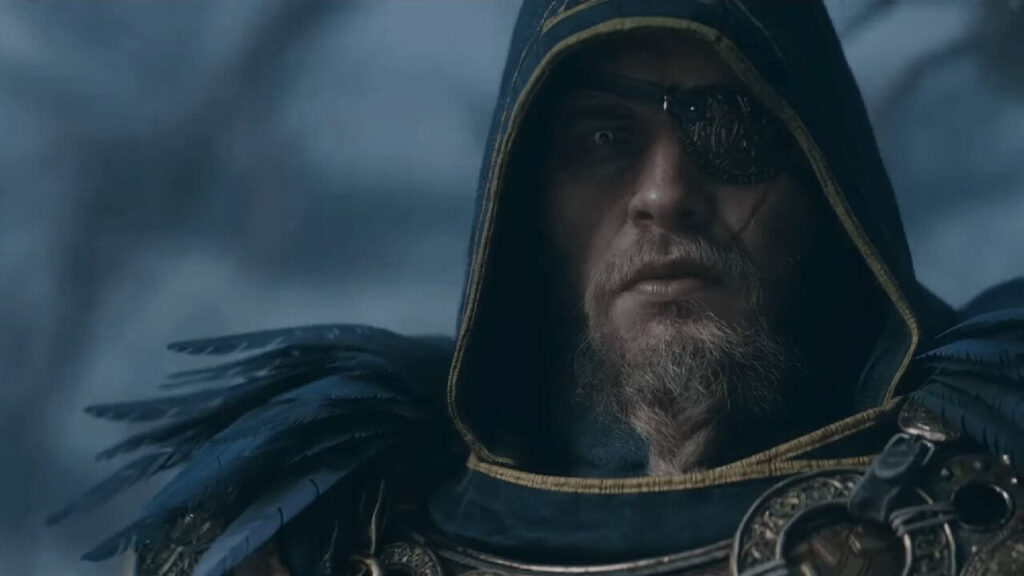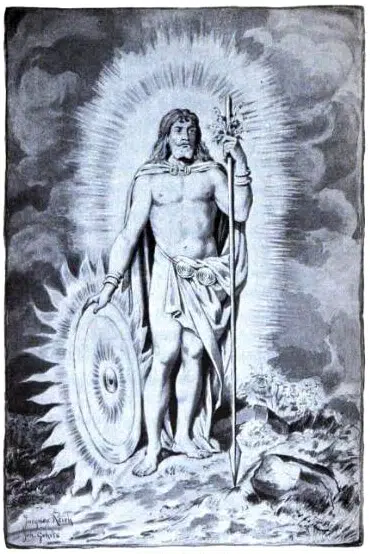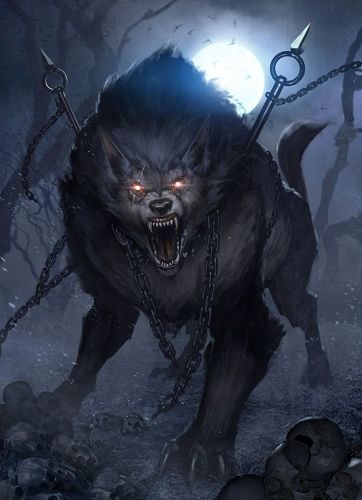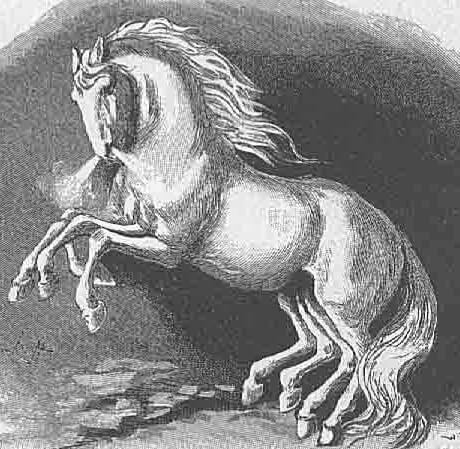Vikings were not only fierce warriors, but they also had strong beliefs about the afterlife. Most of their beliefs centered around Valhalla, a paradise for warriors who died in battle.
What is Valhalla?
In Norse mythology, Valhalla is a majestic, enormous hall located in Asgard, ruled over by the god Odin.
Valhalla is where Odin receives half of the souls of those who die in battle, the other half goes to the goddess Freyja’s field, Folkvangr.
In Valhalla, the dead warriors are known as Einherjar and they feast on the flesh of a boar and drink mead all day and night.
They fight each other in preparation for the final battle, Ragnarok, when they will join Odin and the gods to fight the giants and monsters.
The word Valhalla comes from Old Norse Valhöll, which can be translated as “hall of the slain” or “hall of the fallen”.
The word höll originally meant “hill” or “mound”, but came to refer to a burial mound or grave. So Valhalla is essentially a burial ground or cemetery for fallen warriors.
We first hear of Valhalla in the poem Grímnismál, where the god Odin describes it in great detail. He says that Valhalla has 540 doors, through which 800 warriors can march out at a time. There are also 12 rooms in Valhalla, each with its own roof. In each room, there is a bed for every fallen warrior, and beside each bed, there is a spear and a shield.
The warriors in Valhalla feast on the flesh of a boar called Sæhrímnir. This boar is cooked every day and then resurrected so that it can be eaten again the next day. The Einherjar also drink mead from horns, and their cups are never empty.
Valhalla is described as a very bright and beautiful place. It has golden pillars and roof, and is lit by a crystal chandelier. The floor is covered in sand, and the walls are adorned with shields.
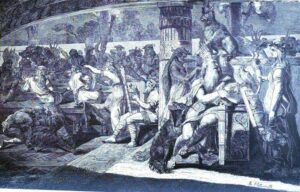
Valhalla illustration by Zimmermann
Odin is the ruler of Valhalla, and he is assisted by the Valkyries. The Valkyries are young, beautiful women who choose which warriors will die in battle and which will live. They also bring the fallen warriors to Valhalla.
In Valhalla, the warriors train for Ragnarok, the final battle between the gods and the giants. Ragnarok is the end of the world, and it is foretold that Odin will be killed by the giant wolf Fenrir.
The Einherjar will fight alongside the gods, and they will all perish in the battle. But it is not all doom and gloom, as it is also foretold that after Ragnarok, a new world will rise from the ashes of the old one.
Practically speaking, Valhalla is a place of great honor, glory, and eternal happiness, where only the bravest and most virtuous warriors go to spend eternity, enjoying life, feasting until the end of time, and training for Ragnarok, the final battle.
Attestations
The most famous reference to Valhalla is found in the poem Völuspá, in which the seeress (or völva) foretells the events of Ragnarok. In the poem, she describes Valhalla as follows:
“Odin’s hall in Valhalla
I saw, with its roof all gold.
Warriors there, all bloody,
From the fight returning home.” (ll. 55-58)
This description gives us a few clues about what Valhalla might have looked like.
First, the roof was said to be made of gold, which suggests that the hall was quite grand and opulent.
Second, the warriors who dwelled there were bloody, which indicates that they had recently been in battle.
The poem Grímnismál also provides a brief description of Valhalla:
“Valhalla is the hall of Odin
In Asgard it stands.
An ash it is, and an elm,
Yggdrasil’s shade.
From there the gods to their judgment
On the day of doom shall ride.” (ll. 17-22)
Here we learn that Valhalla is located in Asgard, and that it is made of ash and an elm. Yggdrasil is the world tree, and its shade is said to be Valhalla. This suggests that Valhalla is a place where the dead go to rest.
We also learn that the gods will ride to Valhalla on the day of Ragnarok, which suggests that it is a place of great importance.
The poem Helgakviða Hundingsbana II also mentions Valhalla:
“Hunding’s bane rode to Valhalla
To Odin’s hall with all his host.
The doors resounded, the rafters shook,
The benches trembled, beer flowed out
On the floor of the hall of Odin.” (ll. 33-37)
This poem tells the story of a warrior who rides to Valhalla after being killed in battle. When he arrives, the noise is so great that the beer flows out of the hall. This suggests that Valhalla is a place where there is a lot of activity and noise.
We also get a sense of the size of Valhalla from this poem, as it is said to be able to hold a large number of people.
The final reference to Valhalla comes from the poem Lokasenna, in which Loki crashes a feast being held by the gods. In the course of his insults, he says to Odin:
“You invited many
Into your hall, O Odin.
But Valhalla’s roof would not have sufficed
To shelter all your einherjar.” (ll. 45-48)
This suggests that Valhalla is a very large hall, and that it can hold a great many people.
So what can we infer about Valhalla from these descriptions? Valhalla is a large, grand hall located in Asgard. It is ruled by Odin, and is the final resting place for fallen warriors. It is a place of great importance and will play a key role in the events of Ragnarok.
So what does the Valhalla symbol mean? And why is it so important in Norse mythology? Read on to find out!
What is the Valhalla symbol?
Actually, we have to say that there is not such a symbol named Valhalla in Norse Mythology, but many think the Valknut (pronounced ‘val-knoot,’) is the one used to represent it
The Valknut is a symbol consisting of three interlocking triangles that is found on a variety of ancient Norse artifacts. The name Valknut is derived from the Old Norse words valr, meaning “slain warriors” and knut, meaning “knot”.
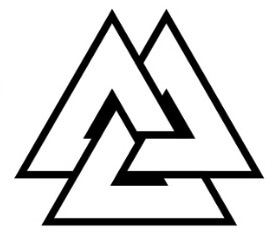
The Valknut symbol has been interpreted in a variety of ways by scholars and archaeologists.
Some have suggested that the three interlocking triangles represent the three worlds of Norse mythology (Asgard, Midgard, and Hel), while others have suggested that the symbol represents the nine worlds of Norse mythology.
Still, others have suggested that the Valknut symbol is a symbol of rebirth or of the cycle of life and death.
The Valknut symbol has also been associated with the god Odin.
Odin is often portrayed as a god of war and death, and he is often associated with the Valknut symbol.
Odin is said to have used the Valknut symbol to bind the souls of fallen warriors to his chariot so that they could be taken to Valhalla, the hall of the slain.
The Valknut symbol has also been linked to the concept of wyrd, a concept central to Norse mythology and Germanic paganism.
Wyrd is often described as a force that shapes the destiny of all beings. Some scholars have suggested that the Valknut symbol represents the threefold nature of wyrd.
It is a particularly enigmatic symbol, and its meaning is the subject of much speculation. Whatever its original meaning, the Valknut is a powerful and evocative symbol and one that has been adopted by many modern pagans as a symbol of their faith.
Where is Valhalla located in Norse Mythology?
Valhalla is a majestic hall located in Asgard, the realm of the gods in Norse mythology. It is presided over by the god Odin, the chief of the gods, and is the final resting place of the souls of warriors who have died in battle. Valhalla is a symbol of the power and glory of the Norse gods, and its name means “hall of the slain.”
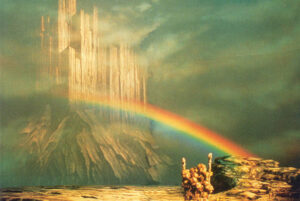
What does the Valhalla symbol mean?
The Valhalla symbol is often used as a tattoo or piece of jewelry (amulet or talisman) for protection in times of need, by people who identify with Norse mythology or Viking culture. It can also be found on flags, clothing, and other items associated with these groups.
The Valhalla symbol is a reminder of the Norse belief that those who die in battle are taken to Valhalla, where they will feast and fight until the end of days. It is a symbol of strength, courage, and honor, and is often used in the Military
Valhalla itself symbolized a great deal. For starters, it reflected the Norse people’s thoughts on life and death, as well as their aspiration for a magnificent afterlife.
Vikings, like other religions that believed in heaven, thought Valhalla was the paradise that awaited them after death.
It seems natural, then, that dying with honor was vital to them, and that they would stride into the battlefield fearless. It wasn’t an issue of surviving or dying for them, but of how one died.
Valhalla also represents the Vikings’ guiding values throughout life. While the Hel they believed in was not a tormented place like the Christians’ idea of Hell, it was a dull and uninteresting place where nothing occurred.
Finally, we believe that Valhalla symbolizes immortality, or the eternal life proclaimed by Christians.
Nobody died in Valhalla. Regardless of their injuries, the Einherjar would recuperate by dusk and return to combat the next day.
Even the food they ate came from a revived boar every day after being slain. The sole distinction between Viking and Christian concepts of eternity is that the Einherjar will die again during their ultimate fight in Ragnarok.
What was the purpose of Valhalla?
The purpose of Valhalla was to train the Einherjar so that they would be ready for Ragnarok. Ragnarok was the final battle between the gods and the giants, and it was prophesied that Odin would be killed in this battle.
The Einherjar would fight alongside the gods in this battle, and it was their job to protect Odin. If they were successful, then they would be rewarded with a place in Valhalla.
What happened to the Einherjar after Ragnarok?
After Ragnarok, Valhalla would be destroyed and the Einherjar would die. However, they would be resurrected and would live in Asgard with the gods.
How did one gain entrance to Valhalla?
A warrior’s entrance to Valhalla was gained through their heroic and honorable deeds in battle.
In order to be accepted into Valhalla, the warrior had to die a heroic and honorable death. Once they died, their soul would be brought before the Valkyries.
The Valkyries would then decide if the warrior was worthy of entering Valhalla. If they were, the warrior’s souls would be taken to Valhalla where they would spend eternity fighting in glorious battles.
Valhalla vs Christian Heaven
The Christian heaven and the Norse Valhalla are both afterlife destinations for those who have died, but there are key differences between the two.
In Christianity, heaven is a place of eternal happiness and rest, while in Norse mythology, Valhalla is a place where warriors go to feast and fight.
Christians believe that heaven is the final destination for all who have been saved by God, where there will be no more sorrow, pain, or death.
Those in paradise will be reunited with loved ones who have also been saved, and they will enjoy eternal happiness in the presence of God.
While both are afterlife destinations, they are quite different from one another.
For Christians in order to enter heaven, one must have lived a sinless, and noble life.
While for Norse people what really counted was a life of honor gained on the battlefield.
Those who died of old age or illness would never go to Valhalla.
Christians believe in a place of eternal happiness, while Norse people believed in a place where warriors can prepare for the final battle, drink, and feast all day long.
Valhalla vs. Hel
Valhalla and Hel are both afterlife destinations, but they couldn’t be more different. Valhalla is a glorious hall where brave warriors feast and fight all day, while Hel is a dark and dreary realm reserved for those who die of old age or disease.
Valhalla is located in Asgard, the realm of the gods. To get there, warriors must be slain in battle. They are then carried to Valhalla by Valkyries, maidens who choose who will feast in Valhalla.
Once in Valhalla, the warriors feast on the meat of a boar that is never-ending and drink from mead horns that are always full. It’s an eternity of glory and excitement, and it’s the ultimate destination for a warrior.
They also spend their days fighting each other, but they are not harmed. This is because they are preparing for Ragnarok, the final battle between the gods and giants, when they will fight alongside Odin, the king of the gods.
Hel, on the other hand, is located in Niflheim, the realm of mist and darkness.
It is ruled by Hel, a giantess with a face that is half-alive and half-dead.
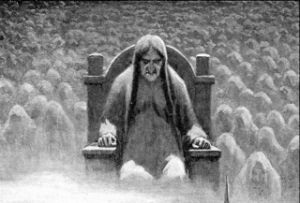
Hel Loki’s daughter
Those who die of old age or disease are sent to Hel, as are those who commit suicide. Unlike Valhalla, Hel is not a pleasant place it’s a dark and dreary realm where nobody wants to go and spend eternity.
Valhalla vs. Fólkvangr
According to Grmnismál, once they die, Freya takes half of the “weapon-dead” into Folkvang. The other half is thought to go to Valhalla, Odin’s more famed hall. The poem makes no mention of the criteria employed to decide who goes to Folkvang and who gets to Valhalla.
Importance of Valhalla in Modern Culture
In modern culture, Valhalla has come to be associated with a paradise for warriors, a place where they can feast and fight to their heart’s content.
This image of Valhalla has been popularized by works of fiction such as the fantasy novel The Lord of the Rings. It has been depicted in several paintings, sculptures, poetry, and other literary works.
The hall has also appeared in mainstream culture, including Assassin’s Creed video games, the comic book series Valhalla, and the television series Vikings. It has even inspired a temple in Germany and a garden in England.
Its popularity in modern culture is due in part to its appeal as a paradise for warriors.
In a world where many people are struggling to find meaning in their lives, the idea of a place where one can feast and fight to their heart’s content is appealing.
Valhalla also has a strong association with honor and bravery, two qualities that are often lacking in modern society.
The image of Valhalla as a paradise for warriors has led to its use as a symbol of strength and courage.
This is because Valhalla embodies the values of loyalty, duty, and self-sacrifice that are essential to the military regarding this topic see also our article What does until Valhalla mean
Why is the Valhalla symbol popular among metalheads and heavy metal fans?
- Valhalla is a symbol that is popular among metalheads and heavy metal fans. There are a few reasons for this.
- Valhalla is a place that is associated with warriors. This is appealing to many metalheads and heavy metal fans who see themselves as warriors.
- Valhalla is a place where you can go after you die. This is appealing to many metalheads and heavy metal fans who are interested in the afterlife.
- Valhalla is a place where you can drink and party. This is appealing to many metalheads and heavy metal fans who enjoy drinking and partying.
- Valhalla is a place where you can be yourself. This is appealing to many metalheads and heavy metal fans who feel like they don’t fit in with mainstream society.
Conclusion
Valhalla is a symbol of hope for many people.
It represents a place where those who have died fighting for their beliefs can go to be at peace.
It is also a reminder that even in death, there is a chance for redemption and that there is always something worth fighting for.
For some, it is a reminder that there is always a reason to keep going, no matter how difficult things may seem.
Valhalla is a symbol of strength, courage, and hope.
Shop Viking Jewelry
Are passionate about Norse Mythology or Vikings?
Finding the ideal piece of Norse Jewelry can be challenging, especially if you lack inspiration or don’t know where to look.
At Surflegacy, we have a wide range of Viking Jewelry in various styles, shapes, colors, and materials, to accentuate your Viking spirit and look.
Whatever you wear, you’ll find the ideal trendy piece to complement your wardrobe. Our jewelry is designed to be worn every day, no matter where you go or what season is. Are you ready to step up your wardrobe game?